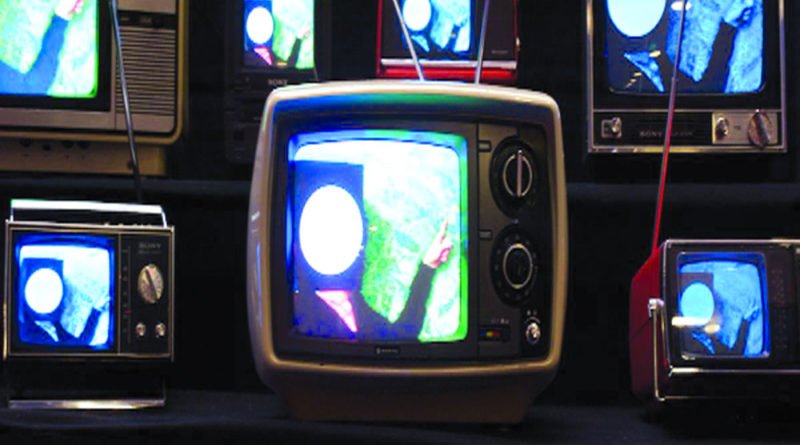Passivity and its causes
It is the defining quest of consumer culture that makes for passivity as it is mainly externally-driven by advertising. How then do we overcome the feeling of insecurity?
After the publication of my last column on June 27, several readers have requested me to elaborate further as to how television breeds passivity. Hence this piece. Before proceeding further, one needs to be clear as to what is meant by passivity. At the visible level, it is reflected in the lack of active response leading to the absence of intervention to ensure follow-up action even in cases where one is deeply moved — such as the arrest of the culprit who prepared the explosives-packed coconut that so savagely killed the pregnant elephant in Kerala on May 27. Even if, however, there had been such intervention, it might not necessarily have indicated the absence of passivity.
The entire issue has to be seen in the context of Erich Fromm’s differentiation in his book, To Have or to Be?, between passive and active states of mind and activity related respectively to “having” and “being” modes of existence. According to him, the “having” mode of existence, marked by alienated activity, makes for passivity. “In alienated activity,” he writes, “I do not really act; I am acted upon by external or internal forces.” An important manifestation as well as an ingredient of the “having” mode of existence is a situation in which “my relationship with the entire world is one of possessing and owning, one in which I want to make everybody and everything, including myself, my property. This tendency becomes so pronounced that it extends even to people, and one talks of “My doctor”, “My employer”, “My boss” and so on.
Fromm makes it clear that passivity does not mean the absence of activity but activity prompted by external forces in contrast to that arising from the autonomous dynamics of the perpetrator’s inner self. One, therefore, can be in a passive state even when engaged in hectic exertion if the latter is prompted by a force outside one. Similarly, physical inaction does not mean passivity if it goes with autonomous inner activity. Fromm associates the active, as opposed to the passive state, with the “being” mode of existence. The latter has as its “prerequisites independence, freedom and the presence of critical reason. Its fundamental character is that of being active, not in the sense of outward activity, of busyness, but of inner activity, the productive use of human powers. To be active means to give expression to one’s faculties, talent, to the wealth of human gifts through which — though in varying degrees — every human being is endowed. It means to renew oneself, to grow, to flow out, to love, to transcend the prison of one’s isolated ego, to be interested, to list, to give.”
The “being” mode of existence is characterised by non-alienated activity. “I experience myself,” says Fromm, “as the subject of my activity. Non-alienated activity is a process of giving birth to something, of producing something and remaining related to what I produce. This also means that my activity is a manifestation of my powers, that I and my activity are one. I call this activity productive activity.”
The question is: How does television promote the “having” mode of existence? It is a technological device for transmitting images and sound over ether. Its evolution as a cultural medium has been largely determined by its symbiotic relationship with the consumer culture, which is marked by self-indulgence and compulsive, competitive and conspicuous consumption, fanned by unbridled advertising, association of personal worth and social status with a high level of consumption and the spread and intensification of the competitive spirit, a critical factor in capitalism. It is the result of a new phase in the evolution of capitalism in which the market plays a dominant role in the system, and which, in turn accounts for an unprecedented emphasis on ensuring higher turnover and surplus. Marketing has emerged as a specialised field and advertising as its cutting edge. Television, which has given advertising a reach and impact it never had before, has become the principal vehicle of the consumer culture.
The consumer culture, which determines the content of television, including advertising, spawns passivity because it undermines an individual’s autonomy. Advertising plays a critical role. In many cases, one would not even have known of a product’s existence but for it being advertised. Nor would one have bought a product if advertising had not promoted it in glowing terms. The act of buying it is thus an externally-induced passive exercise.
It is not just one act of buying. Advertising not only projects commodities as irresistible objects themselves but also their possession as an indication of one’s worth and status — for example by projecting that only a person of a certain class can own a certain brand of suit or a stratospherically-priced car. Given the ubiquity and the audio-visual appeal of advertisements, other criteria of status and worth such as scholarship and superior creativity in the arts, for example, writing and painting, get relegated. An increasing ability to buy things and enjoy services becomes the principal goal of a progressively large mass of people and, as a consequence, the defining quest of the consumer culture.
This defining quest of the consumer culture makes for passivity as it is mainly externally-driven by advertising. The process is reinforced by a compulsion internal to the psyche of people which reinforces the compulsive, competitive and conspicuous consumption that is a hallmark of the consumer culture. In The Fear of Freedom, Fromm shows how a feeling of insecurity comes inexorably upon a person with his/her growing awareness of himself/herself separate from the surrounding nature and people.
According to him, this awareness “remained very dim over long periods of history,” and the process of its growth, which he calls “individuation,” “seems to have reached its peak in modern history in the centuries between the Reformation and the present.” Stating that the same process is found in the life history of the individual, he says that despite biological separation, the child “remains functionally at one with the mother for a considerable period.” It is linked to her by what he calls “primary ties”, an expression he also uses to signify the ties connecting “the member of a primitive community with his clan or nature, or the medieval man with his clan or social caste.” Their existence implies a “lack of individuality but they also give security and orientation to the individual.”
In the case of the child, he/she slowly becomes aware of his/her separateness from his/her mother and others, with physical, mental and emotional development. This leads to the emergence of an “organised structure guided by the individual’s will and reason”. He adds, “If we call this organised and integrated whole of the personality as the self, we can also say that the one side of the growing process of individuation is the growth of self-strength.” The other side is a growing feeling of aloneness which leads to a growing feeling of insecurity given the many dangers that beset a person in every society. This feeling of insecurity is ever-present in market capitalism which is the matrix of the consumer culture and in which the market dominates the system and competition is war with no holds barred. Thus, corporations are stalked by the fear of being taken over or run to the ground by other corporations and individuals by that of losing their jobs or of uncertain futures in their own corporations taken over by new masters.
The way to overcome a feeling of loneliness and insecurity is, Fromm states, to “relate spontaneously to the world in love and work,” in the genuine expression of “one’s emotional, sensuous and intellectual capacities,” becoming one with man, nature and himself “without giving up the independence and integrity of one’s individual self.” Unfortunately, conditions under market capitalism hinder the adoption of such a course. The several ways — including resort to sadistic and masochistic relationships — in which people seek to overcome their feeling of insecurity, include compulsive acquisition of possessions and conformism.
According to Fromm, “Incorporating a thing, for example by eating or drinking, is an archaic form of possessing it.” An infant’s form of taking possession is by swallowing a thing. Referring to many forms of swallowing, including symbolic incorporation, Fromm says, “The attitude inherent in consumption is that of swallowing.” And swallowing under the influence of televised advertising is yet another example of how the idiot box and the consumer culture promote passivity.
(The writer is Consultant Editor, The Pioneer, and author)




